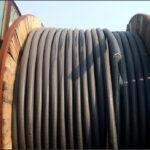How to prevent cable from fire due to conductor overload
During the operation of wires and AAC Cables, they will heat due to the existence of resistance. The resistance of the conductor is generally very small, and its heating power can be expressed by the formula q = I ^ 2R. Q = I ^ 2R shows that for a section of conductor in actual … Read more

